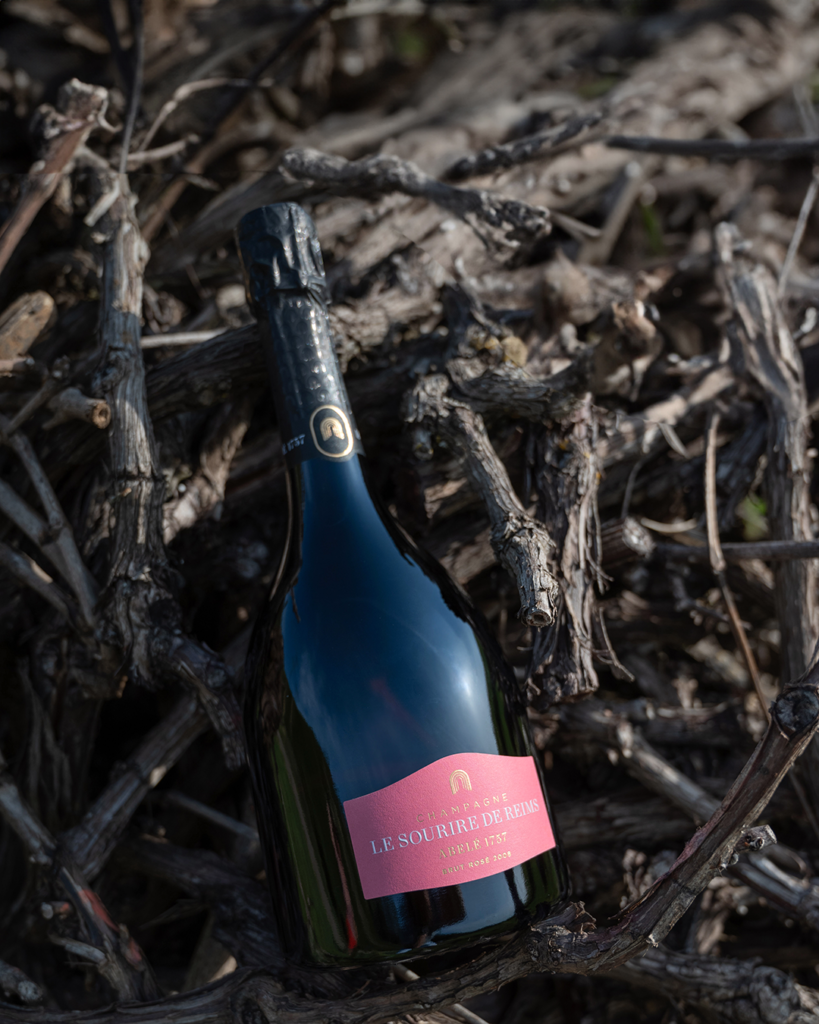


How pre-Harvest period influence the harvest date in Champagne and quality of Abelé 1757 wines?
« It’s now August, a summer period and the final stage before the grape harvest in champagne. It’s a time of contrast, with apparent calm in the vineyard. Tere’s also very few viticultural activities, and yet, the vine and its metabolism are highly active. During this stage, the vine directs all its energy towards loading the grape berries with sugar and developing their aromatic potential.
It also marks the beginning of a long and meticulous process of observation, analysis, and tasting. A few weeks before the harvest begins, our partner winemakers make bi-weekly rounds in the Champagne vineyards to observe the vine’s progress. So the clusters, grapes, their size, uniformity, as well as the coloration and suppleness of the berries, are closely examined as they ripen.
This is the time for berry tasting too. A crucial step that I hold dear, as it allows me to track the major milestones of aromatic development. Depending on the grape variety being tasted, we first encounter vegetal and lime aromas. Then, we find fruity notes, culminating in ripe fruits like yellow or red fruits. It’s at this precise moment, when the fruit is fully ripe, with a healthy sugar load and maintained acidity, that we can determine the harvest date.
Initial berry tastings appear to show a slightly faster aromatic development compared to the scorching and dry years of 2018, 2019 or 2020. This suggests an earlier attainment of aromatic maturity, potentially allowing us to pick the grapes a bit sooner to ensure their freshness.
What is your relationship with the partner winemakers of Maison Abelé 1757?
« The pre-harvest period provides allows us to engage with our suppliers, discussing the challenges encountered throughout the viticultural campaign. For instance, we have to decrease acidity and face the progression of botrytis. This sharing of information enables us to anticipate and prepare, if necessary, for different vinification approaches. This will consistently deliver the highest quality for Abelé 1757 champagnes. »
Does the harvest date in Champagne vary based on different terroirs?
« Each cru, each terroir, each grape variety, each parcel has its own development and maturation rhythm. This is a cornerstone in the creation of Abelé 1757 Champagnes. We are striving for optimal maturation by grape variety, to craft the finest blends.
Pinot Noir develops a structure with finesse and strong fruity potential, particularly red fruits and spices. Depending on the terroirs, Chardonnay expresses aromas of yellow fruits, even exotic fruits. Meunier retains its freshness when the harvest date is carefully chosen. A crucial freshness, that we encapsulate in the assembly of Brut Abelé 1757.
For each grape variety to reach this level of aromatic development and structure, berry tasting is essential. It enables us to select the moment when aromatic and phenolic ripeness is optimal.
The key is to pinpoint the right harvest date according to the terroir. Whether in the Côte des Blancs or the Vitryat, we aim for a diversity representative of these terroirs: the minerality, freshness, and floral dimension of the Côte des Blancs; the richness, exotic fruits, and fully ripe yellow fruits of Sézannais. »
Is your work the same from year to year?
« Every year, the game changes, and the rhythm shifts. We need to go through this exercise again. So we have to review all the plots, and reconstruct the picking circuit based on the sectors. We must assume that what worked last year may not be valid this year.
For instance, 2023 has just set a new record with exceptionally large clusters. An extraordinary year means questioning times. We lack visibility in terms of the quality evolution of this harvest. From experience, cluster size impacts acidity levels and color extraction for rosé blends and macerations.
Last but not least, botrytis, a great adversary for winemakers. We found the presence of gray rot on grapes due to a relatively humid summer. Thus, this has led to numerous outbreaks across the Champagne vineyards for this harvest. This demands careful attention, requiring us to be extremely rigorous during picking to sort grapes in the vineyard, at the pressing centers, and, of course, upon reception in the cellar. This ensures we consistently select the finest quality for Maison’s blends.»
Has the climate of recent years affected maturity and harvest in Champagne?
« The evolution of maturity in the Champagne vineyards over the past years is quite evident. In the early 2000s, the number of days between flowering and harvest hovered around 100 days. Between 2010 and 2015, this time reduced to 90 days. In 2023, we’re now at 85 days, or even a bit less. The harvest in Champagne are happening earlier and earlier…
The vegetative cycle shortens, especially during the maturation phase. We’re observing new metabolic behaviors, with quicker sugar accumulation and a disconnect from the prolonged development of aromas and phenolic elements. These observations, in addition to indispensable berry tasting, help determine the ideal harvest date. »



What makes the Riceys region so unique?
The Riceys region is the largest and most intricate terroir in Champagne. Molded over centuries by erosion, its hills have hosted vineyards since the Gallo-Roman era. Here, Pinot Noir reigns supreme and flourishes due to the unique composition of its soil. That is to say a mixture of Kimmeridgian limestone and limestone marls with a significant proportion of clay (20%).
Its south-facing slopes exhibit characteristics closely resembling those of Sancerre or the Côte de Nuit in the northern Burgundy region. Coupled with a somewhat continental, warm, and dry climate, this terroir enjoys exceptional ripening conditions.
Yet, what greatly contributes to the reputation of the Riceys are its colored wines, notably the macerated rosés and red wines. An extraordinary craftsmanship and quality have led to the development of a unique Champagne appellation: Rosé des Riceys.
What relationship does Maison Abelé 1757 have with the Riceys?
Since the early 1950s, the Pinot Noirs from Riceys have been integrated into all the blends of Abelé 1757 Champagnes. More precisely, this grape variety is the sole component of the Sourire de Reims rosé millésimé. A Blanc de Noirs created only in exceptional years. A special cuvée that we age for over a decade in the cellar before disgorging and release.
To achieve this distinct hue, we carry out maceration for 48 to 72 hours, depending on the vintage. Over the years, this exceptional Champagne wine develops characteristic. For instance, you’ll find aromas with notes of strawberry, raspberry, and gentle spices like white pepper, licorice, and cinnamon. Through extended cellar aging, the bubbles become extremely fine and delicate. A cuvée designed for enthusiasts of pure Pinot Noir.









